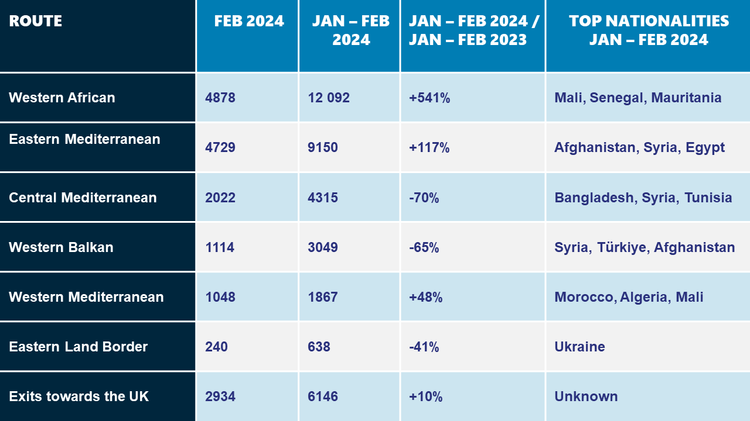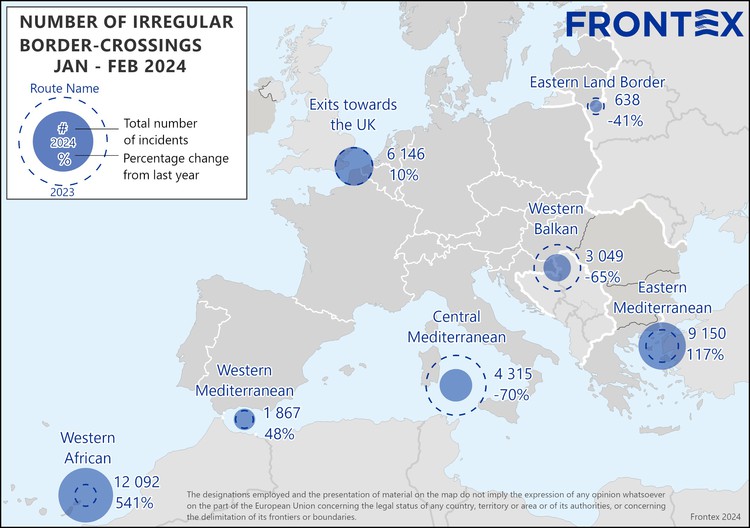The number of irregular border crossings into the European Union in the first two months of 2024 reached 31 200, similar to the level from a year ago, according to preliminary calculations. The Central Mediterranean saw the biggest drop in detections of irregular crossings among the major routes (-70%), while the Western African and Eastern Mediterranean routes experienced the highest increases (+541% and +117%, respectively).
The Central Mediterranean route, which saw the largest number of irregular crossings in 2023, continued to show a downward trend from the recent months, with a year-on-year drop of 70% to slightly above 4 300. In January, there were around 2000 detections on the route.
Meanwhile, the Western African route remained the busiest migratory route in the EU, with arrivals in January and February reaching nearly 12 100. This was the highest total for these two months since Frontex began collecting data in 2011.
In recent months criminal groups involved in people smuggling in Mauritania were quick to seize opportunities presented by the increased demand from sub-Saharan migrants transiting their country seeking to enter the European Union via the Canary Islands. People smugglers have been cramming an increasing number of migrants onto Cayuco boats, putting the lives of the people on board in even larger danger.
Last year, the Western African route experienced the biggest percentage rise in irregular crossings.
The second most active migratory route was the Eastern Mediterranean, with the number of detections more than doubling to 9150 in the first two months of the year.
Frontex remains committed to safeguarding the EU's borders, with nearly 2700 officers and staff engaged in various operations. Currently, close to 200 Frontex officers and staff are supporting Spain on the Canary Islands and the Western Mediterranean.

